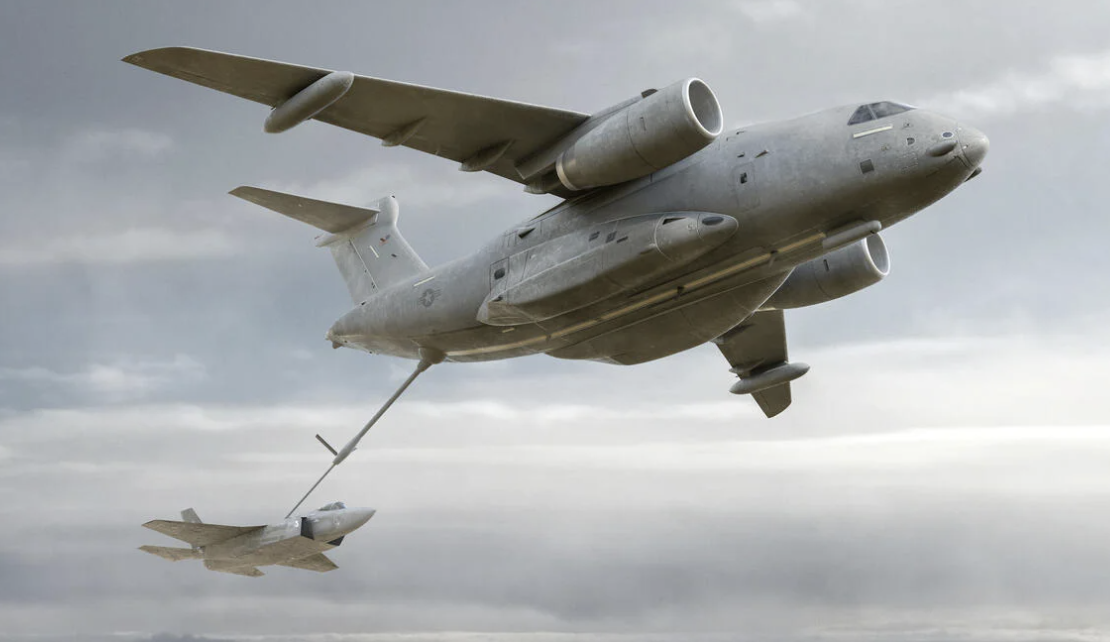
Embraer has partnered with L3Harris to offer the KC-390 aircraft to the U.S. Air Force with a refueling boom, creating an “Agile Tanker” option alongside the twinjet’s tactical airlift capability.
The partnership, which was announced on Sept. 19, gives the Brazilian manufacturer a U.S. industry partner for the first time since Boeing and Embraer shut down a joint venture in April 2020 that was aimed at marketing the KC-390.
The KC-390 Agile Tanker concept emerges as the Air Force develops a concept for a family of refueling systems for a program known as the Advanced Aerial Refueler (AAR), or KC-Z.
“U.S. Air Force strategic planners have stated agile combat employment will require refueling platforms optimized to support a disaggregated approach to air dominance in contested logistics environments,” L3Harris CEO Christopher Kubasik says.
The KC-390 already functions as an aerial refueler for the Brazilian Air Force, but only with a probe-and-drogue refueling system. L3Harris now plans to develop a refueling boom and integrate the system on the KC-390, with the capacity to carry up to 75,000 lb. of fuel.
The concept would position the refueling boom-equipped KC-390 as a complementary system to larger, strategic tankers, such as the Boeing KC-46 and KC-135. As a tactical refueler, the KC-390 could operate from a larger number of shorter runways, including dirt strips, Kubasik says.
The refueling system would include the KC-390’s existing remote aerial-refueling operator station, but it would be modified to work with a refueling boom instead of the probe-and-drogue, says Luke Savoie, president of L3Harris’ intelligence, surveillance and reconnaissance sector.
But L3Harris declined to provide details of other features, such as how the boom would interface with the aircraft’s structure. A model in an L3Harris exhibit booth at the Air, Space and Cyber Conference in Washington shows the boom attached to the aft ramp door of the KC-390, but it was not clear if it would be integrated as a fixed system or a podded system that could be removed in the field or at a depot.
L3Harris has hired a number of people who have experience with refueling booms for the project. The company has not built such a system before. The company, however, has extensive experience with complex aircraft modifications, Kubasik says.
The partnership gives Embraer another opportunity to crack the U.S. defense sector. The announcement comes only a month after a leaked memo by Special Operations Command confirmed the three Sierra Nevada/A-29 Super Tucanos acquired for the Air Force Special Operations Command fleet would be sold to foreign governments. The small Super Tucano order had represented Embraer’s biggest contractual win from the Defense Department since the U.S. Army canceled the Aerial Common Sensor program in 2006, which featured the Brazilian company’s ERJ 145 regional jet.
Embraer has sold the C-390 to Brazil, Hungary, the Netherlands and Portugal, but its last push to market the aircraft to the U.S. military faded after the collapse of the joint venture with Boeing.
“Our aircraft is capturing the attention of air forces around the world, and we’re thrilled by this opportunity to combine Embraer’s state-of-the-art platform and systems with L3Harris’ mission-driven solutions to deliver on the U.S. Air Force’s operational imperatives,” says Francisco Neto, Embraer’s president and CEO.
